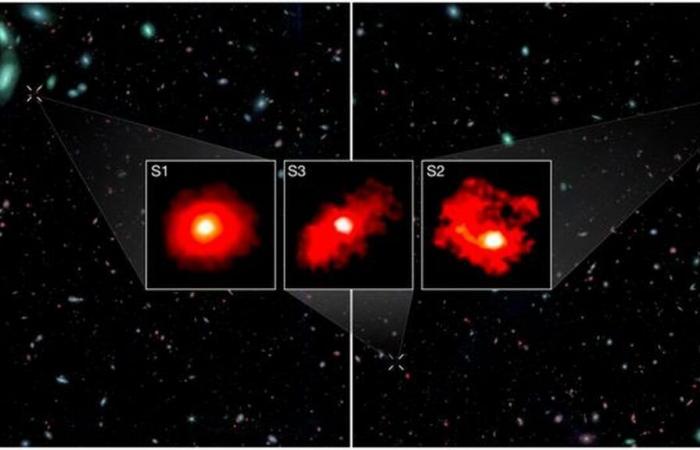An international team has just discovered three monster galaxies in the early Universe. Mathilde Fontez, editor-in-chief of the magazine Epsilonevokes with this discovery, the early childhood of the Universe. This indicates that star formation in the early Universe was much more efficient than expected.
franceinfo: We go back in time to the beginning of the Universe, with the James Webb space telescope which discovered three very luminous galaxies, very rich in stars, just a billion years after the Big Bang?
Mathilde Fontez : Yes, a billion years seems a long time, but on an astronomical scale, it’s very short. And that’s what’s surprising about these three galaxies. Three star clusters – they were called S1, S2 and S3 simply – which were detected by an international team that involves the University of Geneva, and the CEA in France.
They stand out among the dozens of smaller, more normal galaxies recorded by astronomers. S1, S2 and S3 are home to a lot of stars. They are almost as rich as our galaxy, the Milky Way. They are too massive, too mature.
We were rather expecting to find small galaxies?
Yes, at that time in the Universe, astronomers predicted the existence of rather young, small, still embryonic galaxies. Simply because to make a galaxy, normally, it takes time. By the time a gas cloud densifies, becomes more compact, collapses to form first stars, then others.
We imagined that all of this would take billions of years – particularly when observing the rate of growth of current galaxies. These galaxies seem to have undergone a sudden growth spurt: they formed stars, with an efficiency two to three times higher than what was expected, and what we observe in galaxies today.
Is this an anomaly, a special case?
That’s the whole question. Perhaps S1, S2 and S3 benefited from a particular environment, from an area of the Universe very dense in matter, which boosted the formation of stars. But these three galaxies are not the only ones.
Since the commissioning of the James Webb telescope in July 2022, programs have followed one another to observe this primordial Universe. This is the main objective of the telescope: to observe this ancient period, the first ages of the cosmos, how structures, galaxies, stars, clusters of galaxies were formed.
And the anomalies accumulate: spiral galaxies much earlier, very concentrated in stars, hypermassive; black holes that are too big: how could they form so quickly? Too much dust. These three galaxies S1, S2, S3 drive the point home, because they were measured with great precision, by spectroscopy. We may need to review the formation models: the history of the childhood of the universe.






